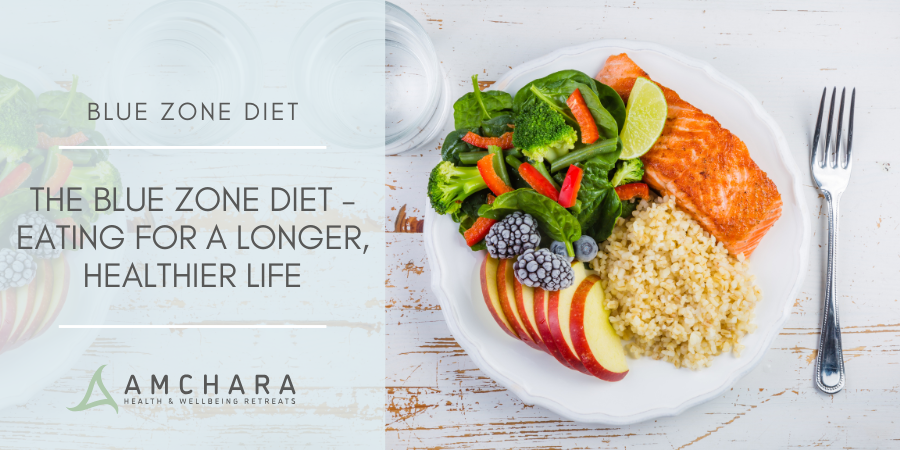Topics Covered in this article:
The blue zone diet is inspired by the eating habits of people who live in regions known for low rates of chronic disease, high quality of life in older age, and longevity.
These blue zone regions include Okinawa, Japan, Sardinia, Italy, Nicoya Peninsula, Costa Rica, Ikaria, Greece, and Loma Linda, California, USA. Researchers, led by Dan Buettner, an explorer and journalist, studied these communities to understand the specific lifestyle and dietary factors that contributed to their long, healthy lives.
In the modern internet world there is an overwhelming amount of information; it can be hard to find health advice that you can trust, particularly as the main media channels are typically dominated with a single, orthodox narrative.
We always aim to provide you with knowledge and actionable tips help you on your journey to optimal health.
This evidence-based article explores the core components of the blue zone diet, how you can adapt it into your lifestyle, and the key health benefits.
Core components of the blue zone diet
A plant-based approach to eating is the foundation of the blue zone diet, with an emphasis on whole, unprocessed foods such as vegetables, legumes (beans, lentils, chickpeas), whole grains, fruits, and nuts.
Animal products are only consumed sparingly, as are processed foods. Olive oil is a key fat source, particularly in Mediterranean regions. Fermented foods like tofu and sourdough bread are also common.
Other key principles include moderate portions, eating until 80% full), and prioritising local, seasonal foods. It is linked to a reduced risk of chronic diseases including heart disease, cancer, diabetes, and dementia, backed by studies on longevity and metabolic health.
While each blue zone has its individual culinary traditions, common dietary patterns include:
Adapting the blue zone diet into your lifestyle
Incorporating the blue zone diet into your daily routine can be achieved through the following actionable steps:
Health benefits
Adopting the blue zone diet has been associated with various health benefits including the following:
The principles of the blue zone diet align with other plant-based diets known for their health benefits, such as the Mediterranean diet, DASH (Dietary Approaches to Stop Hypertension) diet, and Flexitarian diet.
Takeaway
Embracing the blue zone diet primarily involves focusing on plant-based, whole foods while minimising processed items and added sugars. This approach, coupled with other lifestyle factors such as regular physical activity and strong social connections, can contribute to improved health and longevity.
By making gradual changes and adopting sustainable habits, you can integrate the principles of the blue zone diet into your lifestyle for long-term health and wellbeing.
If you are looking to improve your health, why not come on a Personalised Health retreat with us?
At Amchara, we are committed to providing personalised health solutions that provide you with the tools, guidance, and environment needed to create lasting change. We aim to help you achieve optimal health and wellbeing, and we will support you every step of the way.
You will be immersed in a supportive and nurturing environment that enables you to switch off, relax, detox and kickstart your health journey. Our mission is to help you ‘Change for Good’ and empower you to improve your lifestyle and health.
Our tailored approach will take into account your individual health circumstances, and your Amchara Personalised Health retreat programme is uniquely designed for your personal needs and goals.
With expert practitioners on hand, tailored programmes, and a focus on holistic wellness, a detox health retreat at Amchara offers the perfect setting to kickstart your journey to a healthier, happier you.




